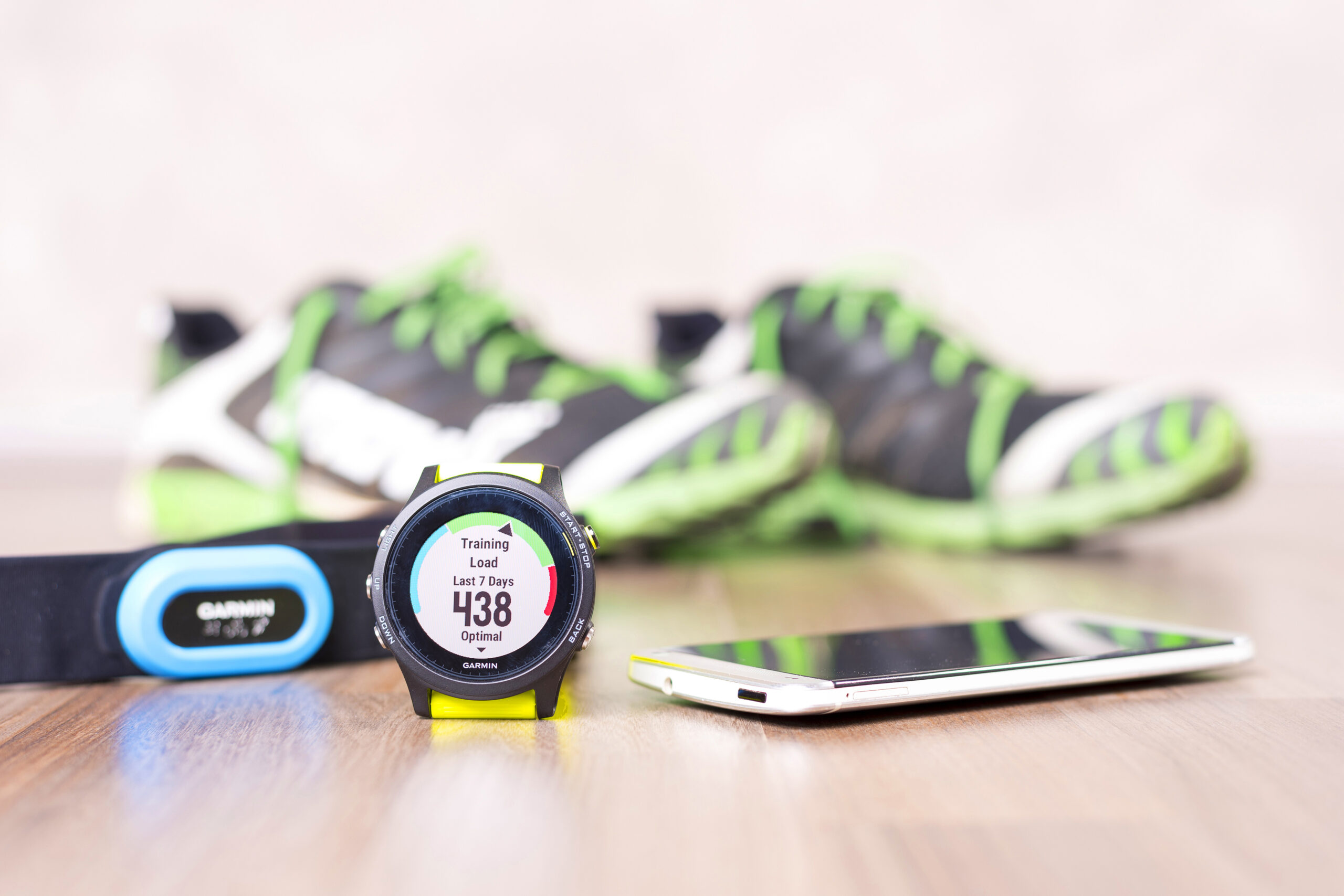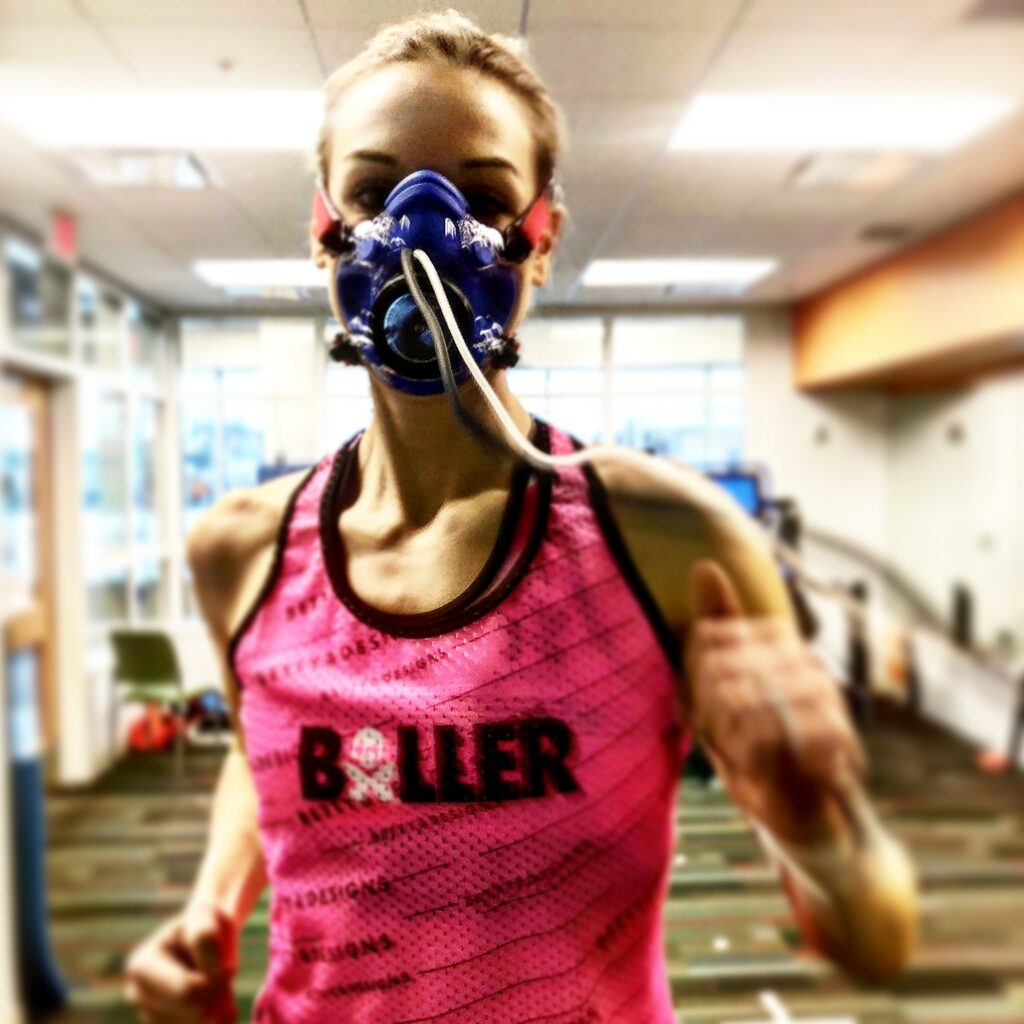
20 Nov V02max: What it means. Why It’s Important.

Todd Buckingham, Ph.D. | Lead Exercise Physiologist, Mary Free Bed Sports Rehabilitation
Picture this: you’re running on a treadmill wearing a mask with tubes attached to it to measure your breathing. You’ve been told to run as fast and as long as you possibly can. All the while, the incline on the treadmill keeps going up and up and up. Your breathing gets heavier and you’re starting to sweat profusely. Your lungs are aching, your legs are burning, and your heart feels like it’s about to beat out of your chest. And just when you think you can’t take it anymore, the incline on the treadmill goes up yet again. You stumble and fall. Thankfully, your hands reach out at the last minute and clutch the rail at the front of the treadmill. But the belt is still running so your feet drag on the belt making a noise that sounds like a belt sander being used to finish off a wood-working project. Finally, the treadmill comes to a stop. You kneel down on the treadmill and rip your mask off so you can finally breathe. Sounds like fun, doesn’t it?! This was me when I did my first VO2max test as a junior in college. My Timehop reminded me that, 11 years ago today, I posted on Facebook “VO2max test = really hard!” Well said past Todd…well said! haha.
Every endurance athlete has probably heard of VO2max. If you own a Garmin watch, it even gives you your VO2max score right there for you to see. But what is VO2max and how can you improve your score?
First, we need to take a step back, define VO2max, and take a little physiology lesson. VO2max is the maximum amount of oxygen (O2) your body can take in and use during maximal exertion exercise. You might ask, “But Todd, why is it important that our body is able to use oxygen during exercise?” Great question! When we breathe, oxygen comes into our lungs, diffuses from the lungs to the blood, gets transported to the muscles, diffuses into the muscles, enters the mitochondria (the powerhouse of the cell as we all learned way back when!), and gets turned into ATP, or energy. This energy pathway that uses oxygen is one of 3 energy pathways our body has, and it creates the most energy out of the 3. Therefore, being able to use more oxygen will allow our body to create more energy.
It might help to think of your VO2max like a car’s engine, but for your body. VO2max is the maximum amount of oxygen your body can take in and use. Hence, the bigger your engine, the greater your capacity for being a good endurance athlete! Now, just because you have a high VO2max doesn’t mean you will automatically be the fastest person in the race. There are other variables that affect race performance like lactate threshold and exercise economy (which we will get to in later blogs). But having a higher VO2max will increase the likelihood of performing better in your race.
And it’s not just endurance athletes who can benefit from having a high VO2max either. Most athletes can benefit from having a higher endurance capacity, even if their sport isn’t necessarily a true endurance sport. Take CrossFit for example. I think most of us would agree that CrossFit is a weightlifting sport, right? But even a workout like Fran (21-15-9 reps each of thrusters and pullups) takes, at minimum, 3 minutes. And that’s for the best athletes in the world. Typically, anything longer than 90 seconds of an all-out effort means that our body is using oxygen as the major energy source. So even a sport like CrossFit where you’re lifting a lot of weight and not running long distances can benefit from having a higher VO2max. However, there are certain instances where having a higher VO2max would be detrimental. Sports/athletes whose performance relies on short bursts of effort that last 10 seconds or less rely on the more powerful energy systems. And having a well-developed aerobic energy system means they can’t have those other energy systems as developed as they need to. Sports like shot put/discus, 60-100m sprinting, anything where the performance is extremely short and highly reliant on maximal force output without repeating it (football would not fit in this category because it is repetitive with dozens of plays occurring each game).
Even if you’re not an athlete, VO2max is important in your overall health. There is a strong association between having a higher VO2max and the risk of illness and death. Improving your VO2max can improve your quality of life and reduce your risk of many diseases including: obesity, stroke, certain types of cancer, and cardiovascular disease to name a few.
Now you might be wondering, “Okay, so now that I know all this stuff about VO2max, how do I test mine?” This is where the fun part comes in! You can either run on the treadmill or ride your bike on an indoor trainer (or swim in a swim flume if you’re fancy and have access to that!) For the treadmill, you warm up with a brisk walk and then a light jog for about 4 minutes before settling into a pace that’s close to your half-marathon pace. After that, the incline on the treadmill keeps increasing until you can’t run any longer!
For the bike, you bring your bike into the lab and set it up on an indoor trainer. The trainer will control the power, so you don’t even have to think about it. You start off at a low power output and increase by 15-50W (depending on your fitness level) until you can no longer push over the pedals to maintain the necessary power output. Sounds fun doesn’t it?! (Side bar/fun fact: did you know the question mark followed by an exclamation point is called an interrobang?! If not, now you do! 😊)
In total, the test only lasts 12-15 minutes with just the last few minutes being really tough. The rest of the test is honestly pretty easy! The reason we want it to be short is so your legs are not the things giving out. We’re measuring the fitness of your heart and lungs, not your muscular endurance. During the test, you get to wear a cool mask like the ones you see in the Gatorade commercials so your oxygen can be measured. This allows you to get personalized and precise training zones based on pace/power, heart rate, and several other variables. You’ll leave with an abundance of personalized data, detailed knowledge of your current VO2max level, and how best to train and improve your performance.
Unlike your sweat composition which doesn’t change, your VO2max will change throughout the year as your fitness changes. That means your training zones will change along with it. Some professional athletes who have the access get tested at the beginning of every training block. That means they are testing their VO2max 6 times or more in a given season! For the rest of us mere mortals, that isn’t necessary. But re-testing a couple of times each year is a good idea. Start with one at the beginning of your season and reassess halfway through to make sure your training is having the desired effect (i.e., increasing your VO2max) and that you’re training in the proper zones.
As someone who loves pushing myself and seeing what my body is capable of, the VO2max test is actually a lot of fun. You wouldn’t think that running all out on the treadmill for 12-15 minutes would be all that fun, but the science nerd and competitive athlete in me thinks it’s the coolest thing ever! 🤓 And not only do you get to test yourself to see how far you can go, but you also get actual data to help support your training and racing.
So, is the number on your watch accurate? The short answer is, probably not. The longer answer would be, probably not…Especially if you’re not using a chest strap to measure HR, your HR data (and therefore your VO2max data) will be much less accurate.
Test. Don’t guess.